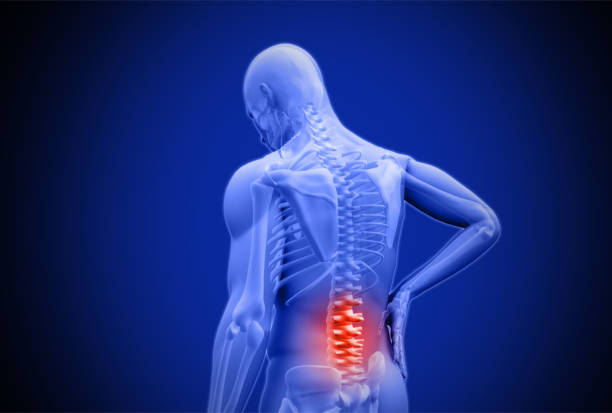Lower Back Pain

Have you been Experiencing Nagging Lower Back Pain?
One day you are going about your day and enjoying yourself. All of sudden you feel a sharp jab in the center of your low back. It may last for a few seconds or it might linger on. You hope that it is nothing and that it will get better. Only to find out later on that now you are limited because of your low back pain and are not sure of what to do. You may take some anti-inflammatory medication or seek care from your medical doctor. You tell your doctor you have low back pain and they may prescribe stronger anti-inflammatories, painkillers or a muscle relaxant. You may even get advice to limit your movement including being told to not bend forward, not to twist, or lift anything heavy. Does this sound familiar? This is what we typically hear from our patients that have low back pain.
Many people will experience at least one episode of low back pain in their life. It is common to experience low back pain. It is a leading cause of disability and high health care costs. The low back has many different components including many little joints, discs, muscles, nerves and ligaments.
Do you feel frustrated and feel that your only option for your low back pain is to avoid movement, take anti-inflammatories, pain medication, get an injection or have surgery? You are not alone.
It is very common when someone starts to experience low back pain, the initial thought is to rest and limit activity. The research and evidence shows that active recovery is and should be the first treatment approach for low back pain. Rest may provide some relief, but introduction of movement early on can help guide the process. A traumatic injury to the low back or surgery will not follow this typical progression and may be required to be immobilized for a period of time, although these instances are a small percentage of low back pain cases.
Many people will even try taking an anti-inflammatory, and get short term relief, but again are left frustrated when improvement is not maintained.
Common Complaints from People with Lower Back Pain?
When one develops lower back pain, there can be many different reasons why.
Some common complaints include:
- Difficulty with sleep
- Significant stiffness/loss of motion at the low back
- Pain/numbness/tingling down the leg and into the foot
- Pain in the buttock region
- Difficulty with walking or even limping
- Feeling that your body is shifted
- Difficulty going up and down stairs
- Feeling of breath being taking away when sharp pain starts
- Fear/Apprehension to move
Do you feel that you may just have to live with the pain and are hoping that it will go away on its own, or hope that it won’t affect the activities you love, such going for a walk, gardening, hiking, running, playing golf, or working out?
Physical therapy has been shown to reduce the risk of needing medications, injections, and surgery to manage low back pain and improve your functional abilities.
What Causes Lower Back Pain?
Low back pain can be caused by many different things. Disc herniations are common and can result in numbness and tingling down the leg when the nerve is also irritated. Smaller joints at the low back known as facet joints can become inflamed and irritated resulting in limited range of motion at the low back and can often feel like pinching or stabbing when provoked. Muscle strains can result in spams at the lower back making it difficult to move. A car accident or a fall can result in a whiplash resulting in weakness of the muscles at the low back. A proper assessment by a physical therapist can help to determine what the issue with your low back may be.
Common Low Back Diagnoses:
- Generalized lower back pain
- Lumbar disc disorders including herniation
- Facet Joint Syndromes
- Lumbar Spinal Stenosis
- Lumbar radiculopathy
- Spondylosis/Spondylolisthesis
- Post-operative lower back surgery (micodiscectomy, laminectomy, fusion)
How can my Lower Back Pain get Better?
Your physical therapist performs an assessment to determine the cause of symptoms and identifies your limits in range of motion and strength. It is common for assessment to include looking at not only your low back, but also your upper back, pelvis, hip, knee, foot and ankle. These findings and thorough discussion with you will determine what things are difficult for you to perform and a plan of action is put together. Physical therapists treatment is tailored to each individual’s needs with the main focus being to find the correct safe exercises for you to perform to improve your pain and function. Hands on treatment such as joint mobilization (movements that guide your joint motion), and soft tissue work help to guide the recovery process. In some situations, other modes of treatment such as electric stimulation, cupping, taping, etc. can also help to guide the process forward. The goal is to decrease inflammation, improve your motion, improve your strength, and improve your function.
Are you Tired of Dealing with Lower Back Pain?
We know that you may be hesitant or skeptical about physical therapy, and that is okay. We wil customize a low back pain treatment plan just for you. We will work in an effective way to help you achieve your goals. If you would like to contact us, we suggest you to the contact us page and call, text, or send us a message.
We have helped many people recover from low back pain and have helped them get back to the activities that they love!